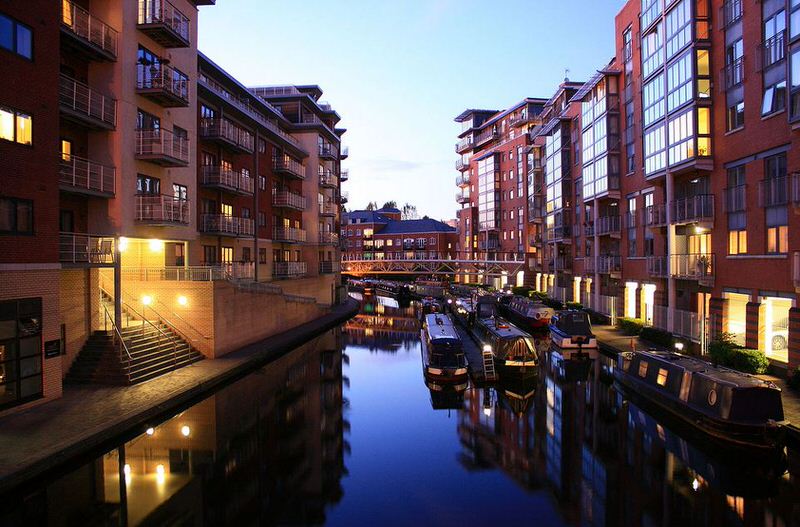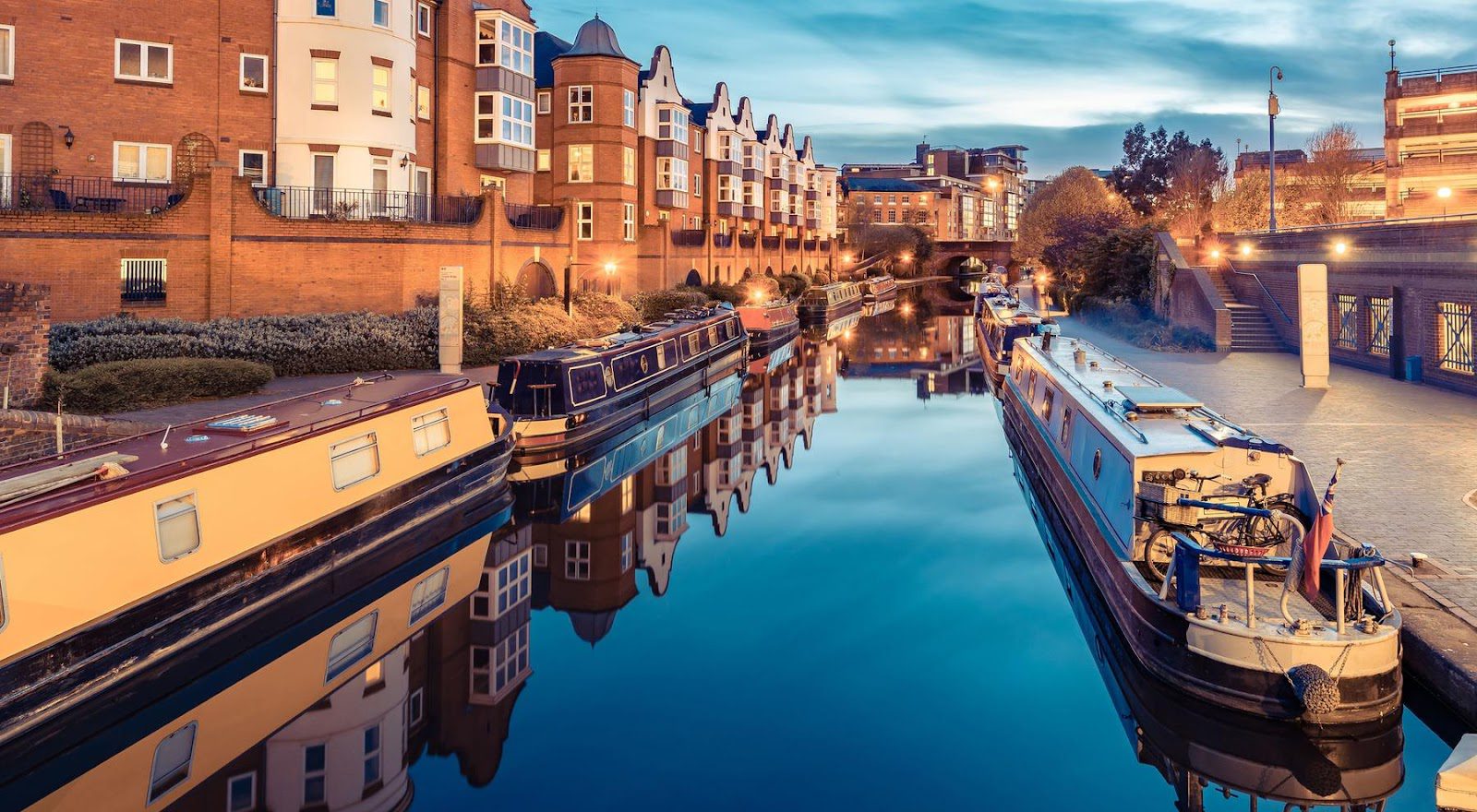Birmingham is located in the centre of England and features a system of canals. Therefore, water transport is well-developed in the city. In the old days, these were the main transport arteries for the transportation of coal, building materials and food products. Whole caravans of gypsy traders moved along the city’s canals. It was very vividly depicted in the series Peaky Blinders. However, even in the 21st century, this type of transport is still alive and has become a public and tourist one. Learn more at birmingham-future.
English Venice
Birmingham has 35 miles of canals according to the maps. The English town far surpassed the famous Venice with its web of waterways. Birmingham canals have become a kind of city attraction. Tourists and locals like to walk, ride a bike or have a morning jog along them. The owners of special narrow boats continue to use the canal ways, as it has been in the period of industrial progress.
The water canals became the key to the city’s successful development. They were cheaper to move, safer and faster.
At the same time, they were a pain for the local police. The canals, which were connecting other cities, were convenient ways to deliver illegal products circumventing city laws.
The peak in the canal construction history occurred in the 18th and 19th centuries. At that time, their length was 170 miles. The first waterway was the Bridgewater Canal. The first canal connected the Duke of Bridgewater’s coal mines with the factory in Manchester.
Its construction was completed in 1761. The Duke hired James Brindley, the best and most famous engineer of the 18th century. He designed six canals in Birmingham.

Hundreds of successful years
For 170 years, Birmingham’s canal system was the most popular in the city. It was mainly used for cargo transportation. At the end of the 19th century, more than eight million tons were rafted through the canals per year.
The canals brought great profits and savings to Birmingham entrepreneurs. However, their expensive maintenance rested on the shoulders of the city. In the 1820s, it turned out that most canals were hardly suitable for freight transport. So, they had to undergo major repairs and reconstructions.
In 1980, commercial traffic on Birmingham’s canals ceased. The development of machine and railway traffic forced carriers to change their usual routes. Thus, there was no point in continuing to restore and improve them.

When the city was undergoing ennobling, the canals were also improved. Park areas, beautiful private houses and new buildings appeared next to them.
Modern canals
The city’s network of canals extends far beyond Birmingham. There are 2,000 miles of canals on the territory of Wales. This not only aesthetically improves the area but also provides additional opportunities for comfortable transportation.
At the same time, Birmingham’s canal system is the most complex in the world. Gas Street Basin is its central hub. Nowadays, boaters continue to move along the canals. However, today, they carry tourists instead of coal.
The network of canals is so large that it allows people to reach remote and rural areas to see a non-touristy Birmingham.
There is even a site about canals in Birmingham where you can find their accurate map and everything about tourism and boats. In addition, there is also an app for boaters. There, you can learn a lot of useful information and warnings. Some English people use it as a type of tourism. This is reminiscent of Jerome K. Jerome’s book Three Men in a Boat (To Say Nothing of the Dog). After all, you can reach the other end of the country through the canal system, thus, avoiding the hustle and bustle of the usual public transport.